Hyundai Creta N Line review: Sporty intentions
Hyundai’s third N Line model definitely looks the part but does it drive just as well?
Published on Mar 15, 2024 11:00:00 AM
26,669 Views
Follow us on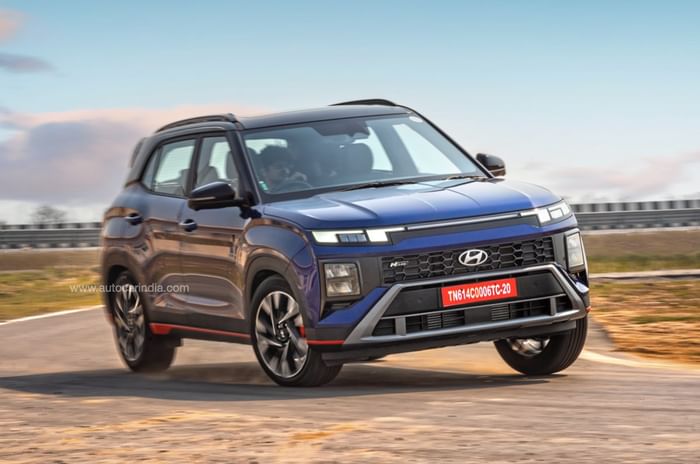
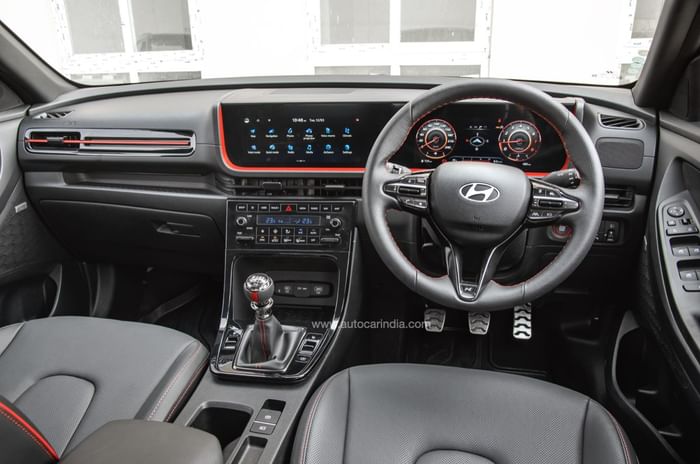
Gets a sporty all-black theme with red detailing.
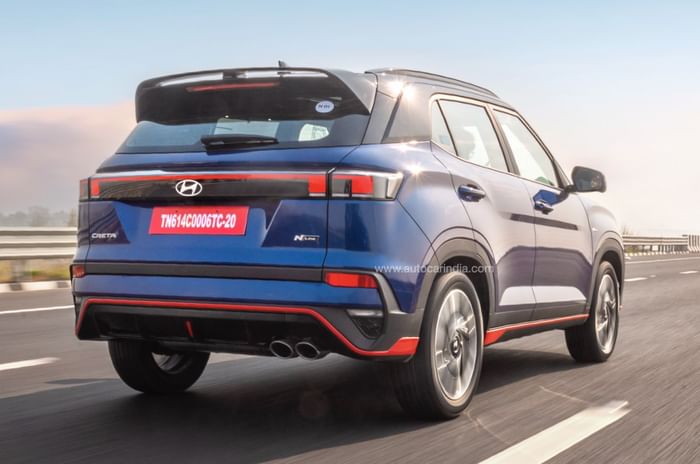
Spoiler, faux diffuser and twin exhaust tips help further its case.
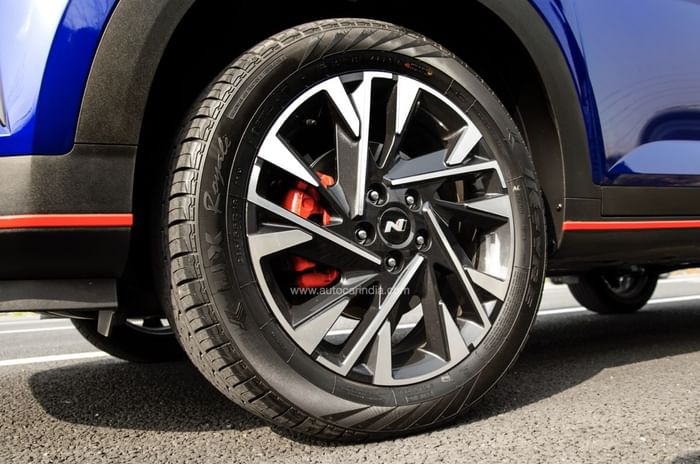
N Line runs on larger, stylish 18-inch wheels.
We Like
- Roomy and feature-rich cabin
- Justifies premium over standard Creta
We Don't Like
- Fit/finish in certain areas
- Not engaging enough to drive
Since the introduction of its N Line brand in India in 2021, Hyundai has gone on to sell over 22,000 units of its sportier models – the i20 N Line and Venue N Line. And now the Creta SUV is the third to get the N Line treatment. The new Creta N Line gets overhauled exteriors and interiors, a new powertrain option and is priced competitively too. So is this the sporty midsize SUV you should go for? Read on to find out.
Hyundai Creta N Line exterior
On the outside, Hyundai has given the Creta N Line a sportier bumper up front with a different grille design; the Hyundai logo is now positioned lower down. Then there’s red detailing on the bumpers and side skirts, larger 18-inch alloys, a roof-mounted spoiler, a faux diffuser with twin exhaust tips and N Line logos all around. To my eyes at least, it does look the part and help exude that sporty vibe, and you definitely won’t confuse this for the normal Creta.
 Sporty bumpers, red detailing and those cool alloys help the N Line stand out.
Sporty bumpers, red detailing and those cool alloys help the N Line stand out.
| Hyundai Creta Price, Mileage, Specifications, Features and Variants | |
|---|---|
| Brand | Hyundai |
| Model Name | Creta |
| Hyundai Creta Price | ₹ 12.98 - 24.16 lakh |
| Hyundai Creta Range/Mileage | Petrol : 17.4 - 18.4kpl | Diesel : 19.1 - 21.8kpl |
| Hyundai Creta Specifications | SUV | 5 doors | 5 seats View All Specs |
| Hyundai Creta Features | LED headlight | 10.25-inch Touchscreen display | 6 airbags View All Features |
| Hyundai Creta Variants | Petrol E MT | Petrol EX MT | Diesel E MT View All Variants |
Hyundai is offering the Creta N Line in three monotone colours – Abyss Black Pearl, Atlas White and Titan Grey Matte (exclusive to the N Line) – and three dual-tone options which get a contrast black roof – Atlas White, Shadow Grey and Thunder Blue.
Hyundai Creta N Line interior
Like the exterior, the interior too features red details and N Line logos all around. The trim pieces on the dash, the stitching and piping on the seats and even the ambient lighting are all red, keeping with its theme. There’s N Line branding on the seats, rear seat cushions, gear lever and steering wheel; the latter two particularly help uplift this cabin.
 N-specific details look and feel great in the Creta.
N-specific details look and feel great in the Creta.
Other than that, the basic interior layout is the same, headlined by the two 10.25-inch screens on the dash. The bezel-less screens look neat and provide a good view out but taller drivers may find them placed a bit too low. The materials and textures used inside are nice but the fit-finish isn’t on par with Kia’s class-leading standards. Meanwhile, the all-black upholstery and the metal pedals suit the sporty character of the N Line.
 Backrest recline, sunshades and neck pillows add to the comfort factor.
Backrest recline, sunshades and neck pillows add to the comfort factor.
The front seats, while comfy, could do with some extra side bolstering given this is a sporty model. The rear seat is spacious and what helps comfort here is the reclinable backrest, sunshades and the soft neck pillows. However, it doesn't get a rear centre headrest, which it really ought to have. Boot space is the same as the normal Creta at 433 litres, and you get the flexibility of 60:40 split-fold for the rear seat backrest.
Hyundai Creta N Line engine, gearbox and performance
Powering the Creta N Line is the same 160hp, 1.5-litre turbo-petrol engine as the standard Creta, Alcazar, Verna, and the Kia Seltos and Carens. However, unlike on the standard Creta, this N Line gets the option of a proper 6-speed manual. There’s also a 7-speed dual-clutch auto on offer and we experienced both powertrains on our drive.
 160hp, 1.5-litre turbo-petrol is carried over unchanged from the standard Creta.
160hp, 1.5-litre turbo-petrol is carried over unchanged from the standard Creta.
The four pot engine delivers its power in quite a linear manner and the boost doesn’t come on as aggressively as on VW Group’s 1.5 TSI. Yes, the engine doesn’t feel alert below 1,700rpm but once the turbo spools up, the healthy 253Nm of torque gives you enough on tap to keep up with traffic or perform a quick overtake. It’s not a quick revving engine but the constant supply of power makes the Creta deceptively fast. It also impresses with its refinement, but unfortunately, it doesn't get a raspy exhaust note like the i20 N Line does.
We started off our drive in the manual given it’s the newer option. The 6-speed box’s shifts require some effort to slot into gear, which is uncharacteristic for a Hyundai, and though the clutch is light, the release action is a bit springy. However, slamming in the occasional quick shift is highly satisfying. What is also nice is the manual gear lever, which looks and feels really high quality.
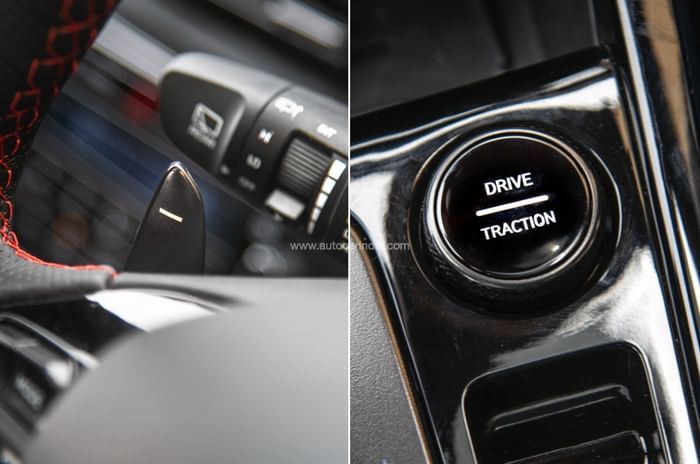 The N Line DCT packs in paddle shifters and drive modes.
The N Line DCT packs in paddle shifters and drive modes.The manual might be the more involving drive but it’s the DCT that feels more complete. This engine feels more suited to this gearbox and as such, the powertrain feels more seamless. The gearbox is also quick to respond to your throttle and paddle shifters/gear lever inputs. What’s also nice is that unlike on the manual, the auto gets drive and traction modes for you to choose from. Apart from altering the theme of the dials, the drive modes also make a difference to the throttle – feels a bit sharper in Sport – and the steering – gains slightly more weight. Furthermore, it also gains adaptive cruise control in the ADAS suite over the MT. All things considered, it’s the DCT which we’d recommend out of the two.
As for performance, the Creta N Line DCT is said to do 0-100kph in 8.9secs, but we’ll have to wait and do our rigorous performance tests to confirm that claim. In terms of fuel efficiency, Hyundai claims the Creta N Line will do 18.2kpl with the DCT and 18kpl with the manual.
Hyundai Creta N Line ride and handling
Like it was the case with the i20 N Line, Hyundai says it has made changes to the Creta’s suspension damping and steering tuning to make it feel more sporty in the N Line. The N Line does feel more involving, more confident and more fun than the standard Creta, but the changes aren’t as transformational as they were on the i20 N Line.
 There is a hint of stiffness, but the ride is well-judged overall.
There is a hint of stiffness, but the ride is well-judged overall.
The ride is well-judged as it feels planted at high speeds and is composed enough when tackling bad roads. It does have a hint of stiffness, which can be attributed to the sportier suspension and larger 18-inch wheels, but it never feels uncomfortable. Braking performance, meanwhile, is more than sufficient.
Around corners, the Creta N Line feels predictable and the 215-section tyres are sufficiently grippy, but it does tend to roll quite a bit. The steering feels well connected and you do get a good idea of what the front wheels are doing. However, it could do with a bit more heft and feedback. The DCT (in Sport mode) is the Creta N Line with the more feelsome steering.
 It's predictable around bends but tends to roll.
It's predictable around bends but tends to roll.
On the whole, the N Line strikes a good ride and handling balance, but it’s not the ultimate driver’s SUV we’d hoped it would be.
Hyundai Creta N Line features and safety
The equipment list of the top-spec Creta N Line N10 variant you see here mirrors that of the Creta SX(O). So you get a panoramic sunroof, dual 10.25-inch screens, dual-zone climate control, ventilated front seats, wireless charging, leatherette upholstery, an 8-way powered driver's seat, an 8-speaker Bose audio system, Hyundai’s BlueLink connected car suite, electronic parking brake, LED lighting and more. Interestingly, the lower N8 variant gets a dual dash cam, but the N10 doesn’t as the ADAS system's cameras are placed in the same position.
 The Creta N Line gets level 2 ADAS features that work well.
The Creta N Line gets level 2 ADAS features that work well.
Speaking of which, the ADAS features include forward collision warning, lane keep assist, dynamic cruise control and much more. On our short drive, we didn’t get to fully test the ADAS, but it did function as intended. Other safety features include six airbags, disc brakes all around, a 360-degree camera, a blind-spot monitor, a tyre pressure monitor, front and rear parking sensors, and ISOFIX mounts.
Hyundai Creta N Line price and verdict
Prices for the Creta N Line start at Rs 16.82 lakh for the N8 manual and go up to Rs 20.30 lakh (introductory, ex-showroom, India) for the N10 DCT variant. The Creta N Line is priced more or less on par with range-topping versions of rivals like the Skoda Kushaq Monte Carlo 1.5 TSI (Rs 20.49 lakh), Volkswagen Taigun GT Plus (Rs 19.74 lakh) and the Kia Seltos X-Line (20.30 lakh).
 The N Line DCT costs Rs 30,000 more than the equivalent Creta DCT.
The N Line DCT costs Rs 30,000 more than the equivalent Creta DCT.
With the output being the same, and the suspension and steering differences being subtle, it’s the cosmetic changes that really set the N Line apart from the Creta, while retaining the other core strengths like the features list, refined engine and roomy cabin. And with it costing only Rs 30,000 more than the equivalent Creta DCT variant, it definitely feels worth that premium considering how effective the aesthetic changes are in conveying its sporty demeanour. It's just a bit of a shame then that the Creta N Line doesn’t get the go to match the show, which would have made its case even more compelling.
Tech Specs 
Copyright (c) Autocar India. All rights reserved.


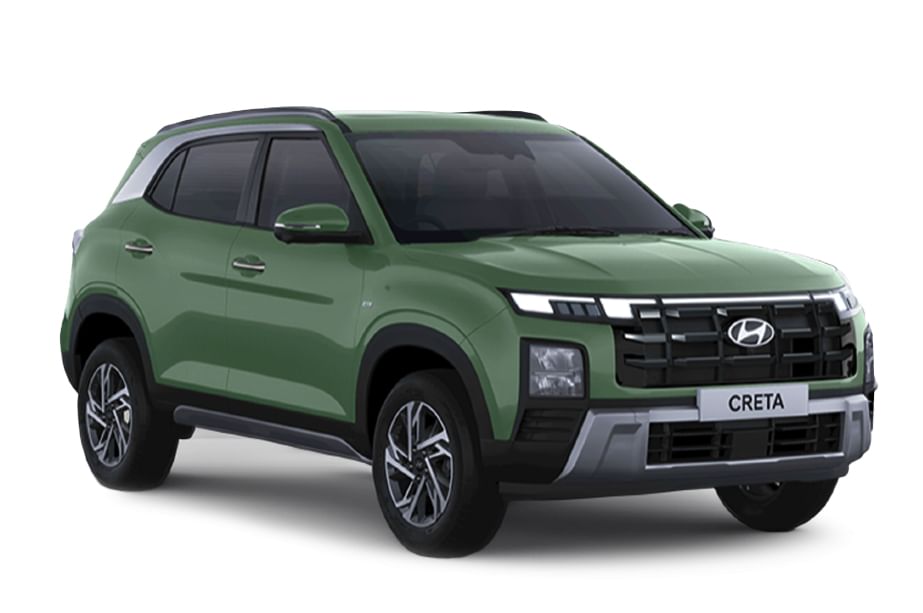




 Price
Price Engine
Engine Transmission
Transmission Efficiency
Efficiency Acceleration
Acceleration Body
Body Suspension
Suspension Brakes
Brakes Dimensions
Dimensions
Comments
Member Login
Personal Details
No comments yet. Be the first to comment.